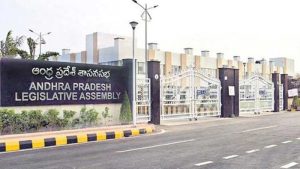The demand for a separate Telangana state reverberated through the halls of the Andhra Pradesh Legislative Assembly and the Indian Parliament for decades, sparking heated debates, political maneuvering, and occasional disruptions. These proceedings reflected the deep divisions and intense emotions surrounding the issue, ultimately culminating in the bifurcation of Andhra Pradesh and the creation of Telangana in 2014.
Early Debates in the Assembly (1950s-1960s)
The demand for a separate Telangana state was first raised in the Andhra Pradesh Legislative Assembly in the 1950s, shortly after the formation of the state. The issue was primarily centered around the perceived neglect of the Telangana region in terms of development, employment opportunities, and political representation.
The debates in the Assembly during this period were characterized by passionate arguments from both sides. The proponents of Telangana highlighted the region’s grievances and argued that a separate state was the only solution to address its problems. The opponents of the demand, mainly from the Andhra and Rayalaseema regions, expressed concerns about the viability of a separate Telangana and the potential impact on the unity of the state.
The Gentlemen’s Agreement and its Aftermath (1956)
In an attempt to assuage the concerns of the Telangana leaders, the Andhra and Telangana leaders entered into a “Gentlemen’s Agreement” in 1956. This agreement provided for safeguards to protect the interests of Telangana, including regional reservations in government jobs and educational institutions.
However, the Gentlemen’s Agreement failed to resolve the underlying issues, and the demand for a separate Telangana state continued to simmer.
Agitations and Resolutions (1969-2009)
The 1969 Telangana agitation marked a turning point in the movement. The agitation, which was led by students and intellectuals, saw widespread protests and violence, forcing the government to take notice of the issue.
In the aftermath of the agitation, the Andhra Pradesh Assembly passed a resolution in 1969 recommending the formation of a separate Telangana state. However, this resolution was not implemented, and the issue remained unresolved.
The following decades saw sporadic protests and agitations, but the issue did not gain significant traction in the Assembly until the late 2000s. In 2009, the TRS, the main political party spearheading the movement, tabled a resolution in the Assembly demanding the creation of Telangana. However, the resolution was defeated, with the majority of the members voting against it.
The Srikrishna Committee and its Aftermath (2010-2013)
In 2010, the central government appointed a committee headed by Justice B.N. Srikrishna to examine the demand for Telangana and to suggest a course of action. The committee’s report, submitted in 2011, outlined six Options, including the creation of a separate Telangana state with Hyderabad as its capital.
The Srikrishna Committee report, however, did not lead to any immediate action. The issue remained mired in political gridlock, with strong opposition from the Seemandhra region.
The Bifurcation Bill and its Passage (2014)
In February 2014, the central government, led by the Congress party, finally decided to move forward with the creation of Telangana. The Andhra Pradesh Reorganization Bill, 2014, was introduced in Parliament and passed by both houses in a highly contentious and emotional Atmosphere.
The passage of the bill was marked by protests and disruptions in both the Assembly and Parliament. The Seemandhra MPs vehemently opposed the bill, arguing that it would be detrimental to the interests of their region. The Telangana MPs, on the other hand, celebrated the passage of the bill as a historic victory for their decades-long struggle.
Implications and Legacy
The creation of Telangana in 2014 was a watershed moment in the history of Andhra Pradesh. It marked the end of a long and arduous struggle and fulfilled the aspirations of millions of people.
The parliamentary and assembly proceedings on Telangana were a testament to the complex and multifaceted nature of the issue. They reflected the deep divisions and intense emotions surrounding the demand for a separate state.
These proceedings also highlighted the challenges of resolving contentious issues through democratic means. While the parliamentary process ultimately led to the creation of Telangana, it was also marked by political maneuvering, delays, and controversies.
The legacy of these proceedings lies in their contribution to the democratic process in India. They demonstrated the importance of dialogue, debate, and negotiation in resolving complex issues. They also highlighted the power of public opinion and the ability of a mass movement to influence the legislative process.
Stay informed about the latest Telangana AP Assembly and Parliamentary proceedings. Get in-depth coverage of debates, discussions, and decisions impacting Telangana’s future.